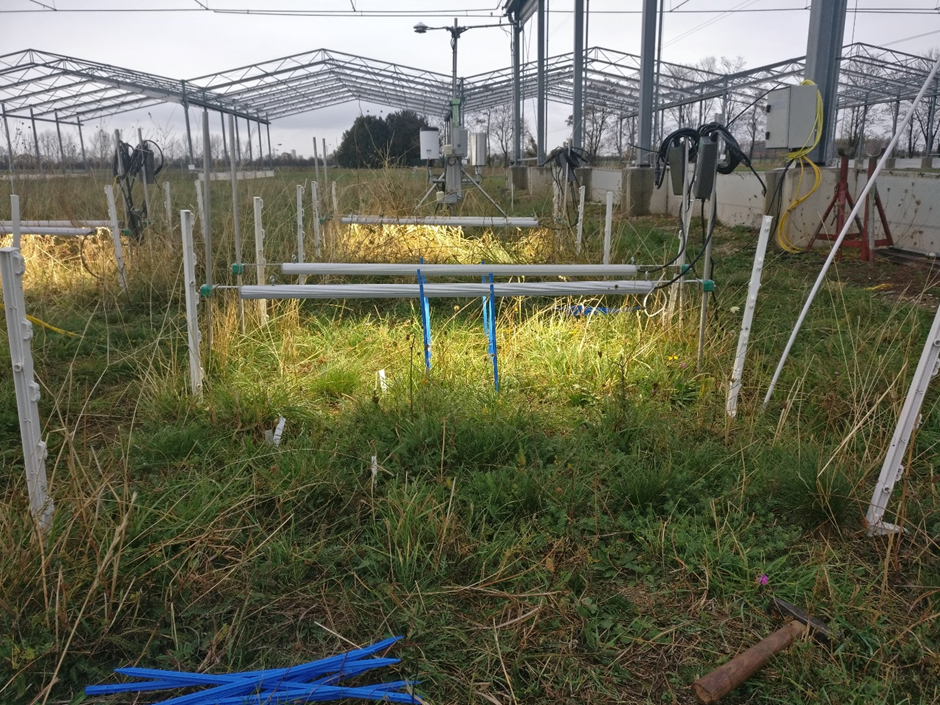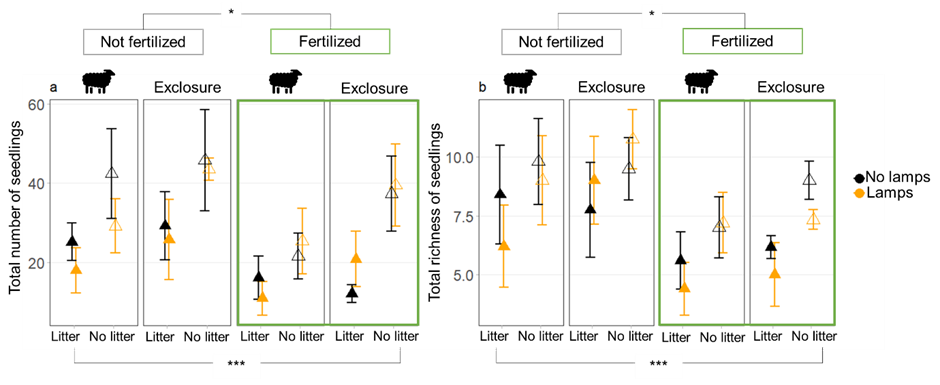2023 HARPER PRIZE SHORTLIST: Throughout March, we are featuring the articles shortlisted for the 2023 Harper Prize. The Harper Prize is an annual award for the best early career research paper published in Journal of Ecology. Maria Jessen’s article ‘Litter accumulation, not light limitation, drives early plant recruitment‘ is one of those shortlisted for the award:
👋 About me: from forests to grasslands
I have always been a nature-loving person, so I started my studies in International Forest Ecosystem Management at the Eberswalde University for Sustainable Development, Germany. I envisioned making the world a better place by later working in nature-based development aid. But an internship at the Climate Impact Research Centre in Abisko, Sweden, and at the Laboratorio Ecotono in San Carlos de Bariloche, Argentina, opened up the fascinating world of plant community research to me. To delve deeper into high latitude ecosystems, I worked several times as a field assistant in Abisko and moved to Umeå, Sweden for a Master’s degree in Ecology. Already during my internship, I developed a passion for working with (tree) seedlings, as they represent both new beginnings and continuity. For my PhD position I switched from forest and arctic to grasslands. I moved to central Germany, where I worked ( and am still working) at the Helmholtz Centre for Environmental Research and the German Institute for Integrative Biodiversity Research (iDiv) in Leipzig. During my PhD, I focused on plant community aspects of biodiversity loss in grasslands with regard to competition for light under nutrient enrichment and the loss of mammalian herbivores. After completing my PhD, I worked temporarily on annual ring data of herbaceous plants in response to land management.
🔎 The shortlisted article: Seedlings controlled by litter
My article contribution “Litter accumulation, not light limitation, drives early plant recruitment” was realised using the infrastructure of a unique field experiment in which grassland plant communities in the field were directly supplied with light via LED lamps in full-factorial combination with nutrient enrichment and exclusion of herbivores (sheep). For the article, we conducted a sub-experiment with the addition of seeds of 15 grassland species, in which litter removal was added as a treatment.
The motivation for this study was the theory of light deprivation-induced diversity loss during nutrient enrichment and herbivore loss. In particular, we wanted to understand what happens during early recruitment, e.g. species arrival. Therefore, we investigated the importance of decreasing light availability due to shading by surrounding vegetation compared to litter accumulation during early seedling recruitment.

The results clearly showed that litter accumulation hinders seedling recruitment, while the addition of light does not improve seedling recruitment, even when litter is removed. The finding that the addition of light had no effect in any of the experimental treatments was quite surprising, as we would have expected from both theory and experimental evidence that the addition of light would have a positive effect on diversity, especially with nutrient enrichment and herbivore exclusion.

Working on this article taught me to identify seedlings from cotelydons alone, which I really enjoyed once I developed an eye for it, but also showed me to never stop questioning theories, regardless of how long or well established they are. In this particular case, we learnt that the diversity of seedling and adult plant communities is controlled by different mechanisms, which is an interesting piece of the puzzle for the overall picture of ongoing biodiversity loss. In this study, the exact mechanism by which litter accumulation reduces seedling recruitment remains unanswered.
🌱 My current research: new paths with Nutrient Network
I am writing this blog text during my parental leave. Prior to this, I took up a postdoctoral position within the Nutrient Network, looking at disturbance effects of small mammal herbivores in relation to nutrient enrichment. The inspiration for this came from working with the nominated paper, as we found clear evidence of small mammal herbivore damage in our plots that seemed to differ between treatments, and kept wondering what impact this had on the overall plant community.
In addition, I would like to use the European Nutrient Network to direct my future research to a more integrative and interdisciplinary level, investigating a combination of ecological and social aspects of grasslands in times of change. Now that I have a child, I am even more sensitive to how and to what kind of world I want to contribute to. Creating knowledge through research is a great opportunity.
Find out more about Maria’s research online.
Read the full list of articles shortlisted for the 2023 Harper Prize here.




